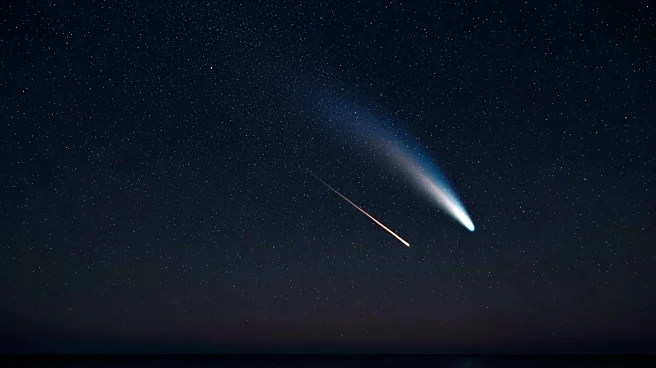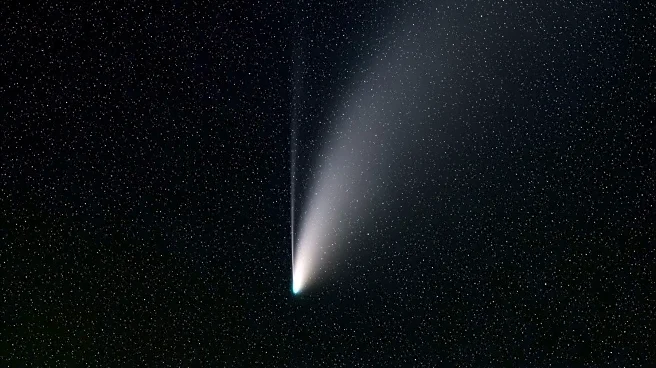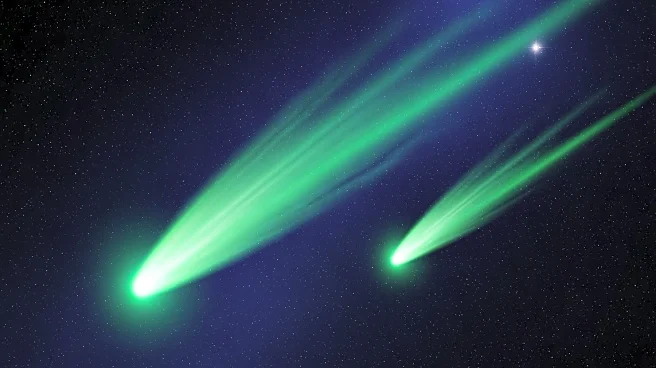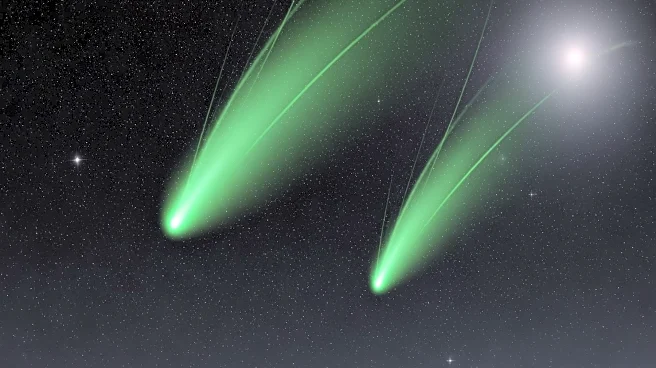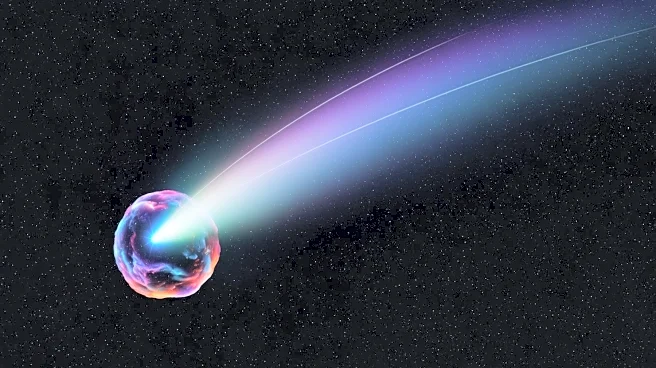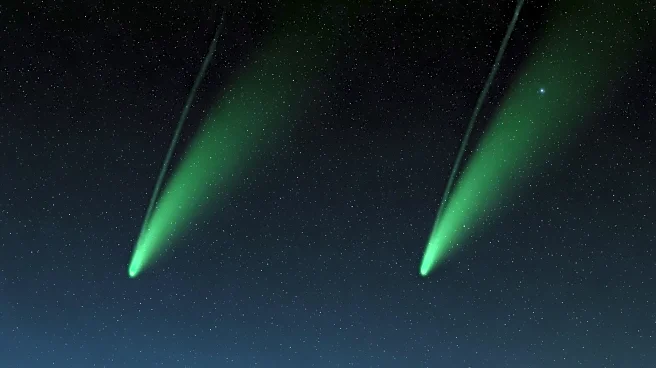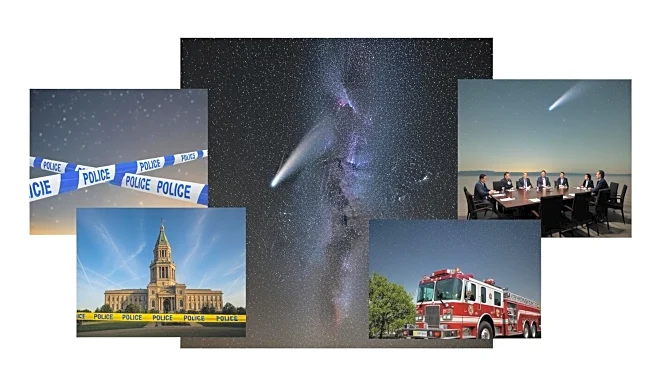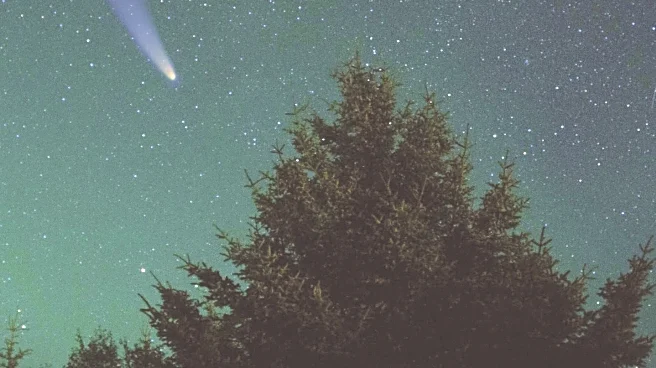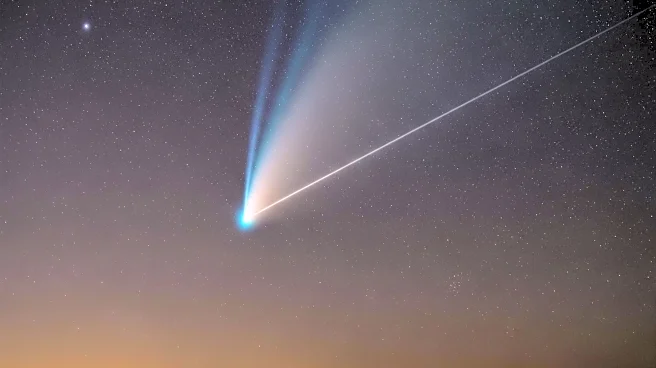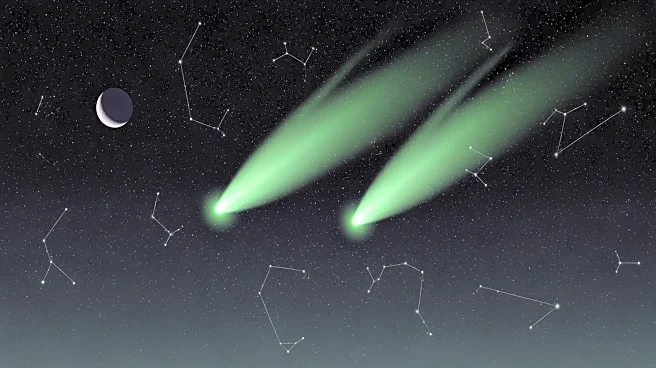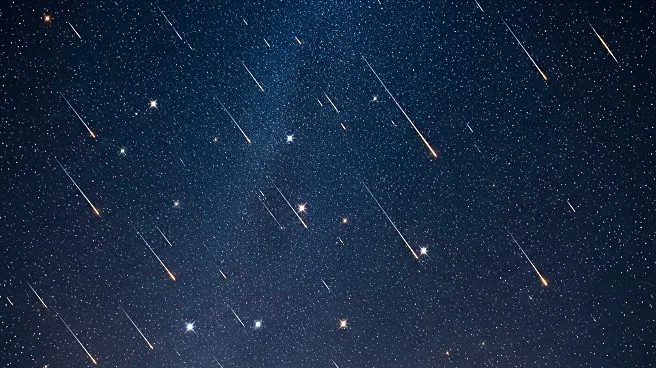What's Happening?
This week, astronomy enthusiasts are gearing up for a series of celestial events, including the Orionid meteor shower and the visibility of two binocular comets, C/2025 A6 Lemmon and C/2025 R2 SWAN. The
Orionid meteor shower is expected to peak late on October 21, offering a display of 10-20 meteors per hour under optimal conditions. Meanwhile, Comet Lemmon and Comet SWAN are approaching their closest points to Earth, making them visible with binoculars. Comet Lemmon is anticipated to reach a brightness of 5th magnitude, while Comet SWAN is expected to be around 6th magnitude. These events provide a unique opportunity for stargazers to observe the night sky and explore constellations such as Scutum, Aquila, Canes Venatici, and Boötes.
Why It's Important?
The occurrence of the Orionid meteor shower and the visibility of comets Lemmon and SWAN offer significant opportunities for both amateur and professional astronomers to engage with the night sky. Meteor showers like the Orionids are linked to the debris from Halley's Comet, providing insights into cometary behavior and the solar system's dynamics. The visibility of comets Lemmon and SWAN allows for observation of these celestial bodies' trajectories and compositions, contributing to scientific understanding of cometary phenomena. These events also foster public interest in astronomy, encouraging educational activities and community engagement in stargazing events.
What's Next?
As the Orionid meteor shower peaks, astronomers and enthusiasts will continue to monitor the night sky for optimal viewing conditions. The visibility of Comet Lemmon and Comet SWAN will be closely observed, with finder charts available to aid in locating these comets. The events may prompt local astronomy clubs and observatories to host viewing sessions, providing educational opportunities for the public. Additionally, the data collected from these observations could contribute to ongoing research in cometary science and meteor shower dynamics.
Beyond the Headlines
The fascination with celestial events like meteor showers and comet sightings highlights the cultural and scientific significance of astronomy. These occurrences not only offer a spectacle for the public but also serve as a reminder of humanity's connection to the cosmos. The study of meteors and comets can lead to advancements in understanding the origins of the solar system and the potential for life beyond Earth. Furthermore, these events can inspire future generations to pursue careers in science and technology, fostering innovation and exploration.
